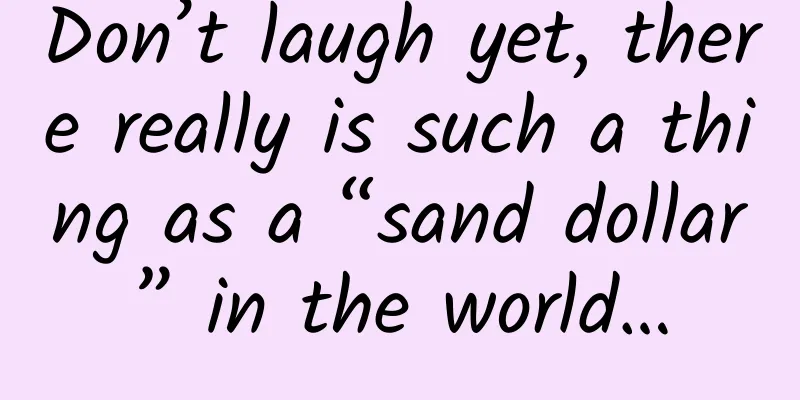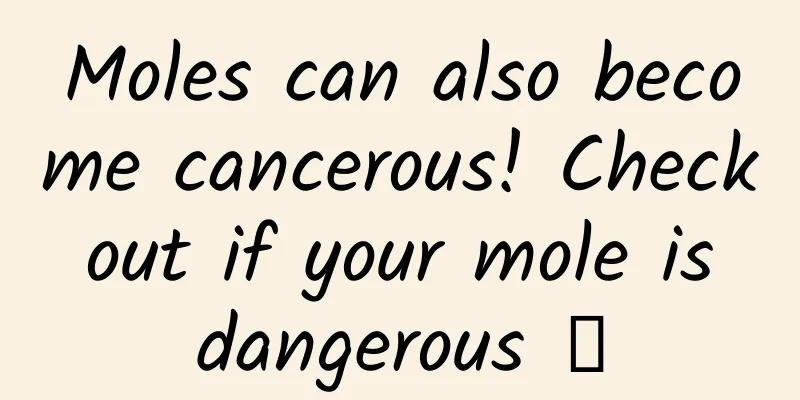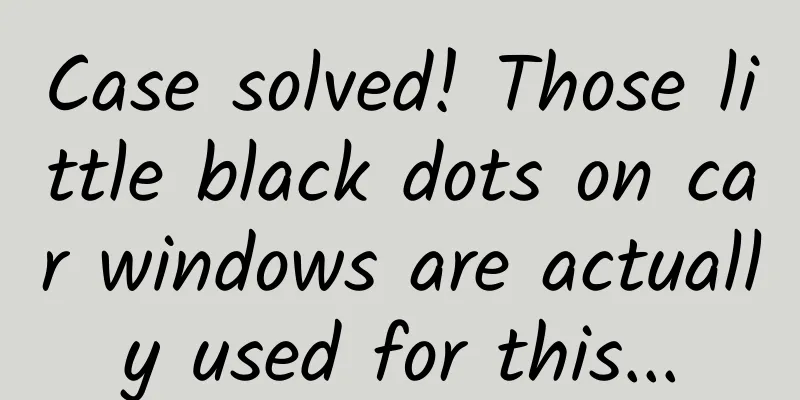Don’t laugh yet, there really is such a thing as a “sand dollar” in the world…

|
If you were on the beach and picked up the "white disc" in the picture below, what do you think it is most likely to be? Is it a shell, a stone, or an ancient plant petal fossil? "Dead sand dollars" on the beach Image source: sanddollarshelling The truth may surprise you Because what you picked up was actually a sand dollar! Friends who often go to the sea know There are so many tricks involved here! Sand dollars, also known as sand dollars, sand yuan or sea dollars, are the general name for species of the order Placodermica, class Echinoides , so they can also be regarded as a special type of "sea urchin". When a living sand dollar dies and is washed up on the beach, it is bleached by wind and sun. For the old people who used to go to the beach, it is like a big silver coin buried in the sand, hence the name "sand dollar". Image source: wildcoast What is the origin of the Sand Dollar? What is the difference between it and the common sea urchins we see? 01 Special sea urchin In our traditional impression, sea urchins look like balls covered with spines, which is also the common appearance of sea urchins in daily life. In fact, the word "sea urchin" refers to the "regular sea urchin" , which is usually symmetrical and spherical. Similar to other echinoderms such as crinoids, starfish, brittle stars, and sea cucumbers, sea urchins also have radial symmetry, and they have five radial symmetry. Atlantic purple sea urchin Image source: virginiaaquarium The so-called five-spoke symmetry, in simple terms, means that five symmetry planes can be made through the central axis from the oral surface to the anti-oral surface of the animal's body, dividing the animal body into two basically symmetrical parts. Since there are "regular sea urchins", of course there are also "irregular sea urchins". This type of sea urchin includes our protagonist today, the "sand dollar", as well as heart-shaped sea urchins, biscuit sea urchins and other groups. They differ from regular sea urchins in that, in addition to the typical five-spoke symmetry, their bodies also display a secondary anteroposterior bilateral symmetry, mainly judged by the position of the mouth and anus. For example, your mouth and anus are on your left and right hands respectively... Regular and irregular sea urchins. Image source: Fortaleza & Aquino "Sand dollars" and other irregular sea urchins began to differentiate in the early Jurassic period. About 10 million years later, some irregular sea urchins had all the characteristics needed to survive in seabed sediments, which were the early prototypes of "sand dollars". In the Paleocene, the first true genus of sand dollars (Togocyamus) appeared. The sand dollars at this time were almost the same as modern sand dollars. After Togocyamus, various forms of sand dollars began to emerge and spread all over the world. An early sand dollar fossil from the late Jurassic. Image courtesy fossilera It is worth mentioning that the sand dollar expanded so quickly that not many intermediates appeared in the evolutionary process. This rapid evolution and diversification indicated that it was the result of a sudden adaptive breakthrough . Scientists speculate that perhaps the environment at that time was very suitable for the survival of the sand dollar. 02 Eating while lying down is so delicious The unique shape of sand dollars also creates their unique lifestyle. Today, sand dollars can be found in tropical and temperate intertidal zones, and modern sand dollars have changed from surface organisms that originally lived above the seabed to endobean organisms that burrow beneath the seabed. What remains unchanged is that the most comfortable breeding ground for sand dollars is still in the sediments on the seabed, because they like soft seabed areas , which are also suitable for their activities, feeding and reproduction. Image credit: Allison J. Gong Like most sea urchins, sand dollars are dioecious. They release gametes (sex cells) into the water for in vitro fertilization. The combined sand dollar larvae go through several metamorphosis stages before skeleton formation. Although the sand dollar larvae have little self-protection ability at this time, scientists have discovered that the larvae can actually clone themselves. When approached by a predator or sensing the dissolving mucus of a predatory fish, the larvae of some sand dollars will split themselves in two, producing larvae that are more than half the size of their originals , helping them to have a better chance of survival. Sand dollar larvae being cloned. Image credit: Dawn Vaughn When the larvae develop into adults, they will form hard skeletons and short spines will grow on their surface. These spines are equivalent to the hands and feet of sand dollars, which can help them move or drill into the sand layer on the seabed. Sand dollars dive into the sand to avoid predators on the one hand, and to eat on the other hand. Because it is too inefficient for sand dollars to crawl on the seabed to find food, they mostly sit and wait for food to come to them. Sand Dollar Slowly Crawling for Food Source Watermark Sand dollars mainly feed on small copepods, crustacean larvae, diatoms and marine microorganisms. These foods are usually carried away by the water current. Sand dollars will insert themselves obliquely into the sand on the seabed with their mouths facing the water current, intercept the food in the water current, and then use their spines to transport the intercepted food to their mouths. Image source watermark Generally speaking, the faster the water flow and the stronger the liquidity, the more abundant the food is. Therefore, sand dollars prefer to stay in waters with fast currents. At this time, the special structure of sand dollars plays an important role. Since the sand dollar's skeleton is composed of radially arranged hard shells, it forms a geometric layout similar to a "segmented shell". This layout disperses local pressure to the whole by connecting organic fibers and calcium protrusions, thereby improving its compressive resistance. At the same time, the holes on the surface of the sand dollar and its radially symmetrical shape also help reduce water flow resistance and prevent it from being washed out of the sand layer. Lying down when tired Image source: robin riggs 03 You can pick up dead sand dollars, but not living ones. There are many folk legends and myths about sand coins. The most famous of these is the symbolic meaning of sand coins in Christianity. People regard the five cracks on the surface of the sand coin as the wounds on Jesus' body, and the star in the middle as a symbol of the Star of Bethlehem. Image source: millhill If you open the sand dollar, you will find five small bones inside, which are also regarded as "peace doves", symbolizing goodwill and peace to the world . Legends are always beautiful, but the reality is that these "peace doves" are actually the mouths of sand dollars. Sand coin's mouth picture source ins However, there are still many tourists who like to pick up sand dollars on the beach as souvenirs, but before picking up the sand dollars, you must first make sure that the sand dollars are not alive. Because live sand dollars are an important part of the marine ecosystem, in the food chain, they help control the number of small invertebrates, and also serve as food for some large animals, although sand dollars are almost all hard bones and there is nothing to eat. More importantly, in some countries (such as the United States), it is illegal to pick up live sand dollars. To tell whether a sand dollar is dead or alive, you can look at its color. If it is brown, red or purple, it is most likely alive. You can further observe whether the thorns of the sand dollar are still moving. If the thorns are still moving, then it is also alive. Left: "Dead Sand Dollar" Right: "Live Sand Dollar" Image source: Internet Picking up a dead sand dollar may mean taking away a memory, but putting down a living sand dollar means leaving behind a life. Protecting every life in the ocean means protecting the harmony between us and nature. References Yu Xiangli. Huang, Study on taxonomy of sea urchins in the East China Sea[D]. Graduate School of the Chinese Academy of Sciences (Institute of Oceanology), 2003. Sand Dollar Facts https://www.thoughtco.com/sand-dollar-profile-2291807 https://blueanimalbio-mirror.github.io/wujizhui/jipi/index.htm https://www.palass.org/publications/palaeontology-journal/archive/25/1/article_pp1-9Author: Yuyu Editor: Dong Xiaoxian Reviewer: Zhang Chao, Li Peiyuan |
Recommend
How to design a landing page?
As the first encounter between a product and new ...
Traffic thinking is dead, interaction and content marketing are immortal
Recently, I have received messages from some mark...
Evaluation of 16 Bluetooth headsets: Are the thousands of yuan headsets only good for making noise?
Since we launched the call for submissions in Jan...
The temperature is like a roller coaster when the seasons change. If you don’t want to get sick, learn these things from me
With the change of seasons, the temperature often...
The teacher was asked to resign and was sued for 420,000 yuan!
Article 23: An employer and an employee may agree...
What is the daily work of an information flow optimizer and what is the job content of an information flow advertising optimizer?
The job of an advertising optimizer is mainly to ...
Decoding Toutiao’s article recommendation mechanism: What kind of headlines are more popular?
As one of the preferred content distribution plat...
Is the story of “The Crow and the Pitcher” true?
Is the story of “The Crow and the Pitcher” true? ...
It was once the "twin star" of the Earth, but it has a completely different fate
Venus is a terrestrial planet in the solar system...
Car beauty mini program functions, how much does it cost to develop a car beauty WeChat mini program?
With the continuous development of China's eco...
Samsung Electronics' share of the global DRAM market was 41.9% in the first half of 2023, down 1.6% year-on-year.
According to foreign media reports, due to the de...
Which housing loan interest rate is better? The difference between fixed and floating interest rates in 2020
When converting the pricing of existing mortgage ...
Promotion and traffic generation: How to use Zhihu to attract traffic and fans?
I believe everyone knows Zhihu, which gathers pro...
Zhong Xue Gao Brand Marketing History
When it comes to Zhong Xue Gao , it is definitely...









